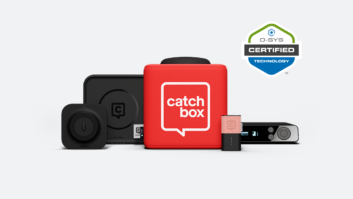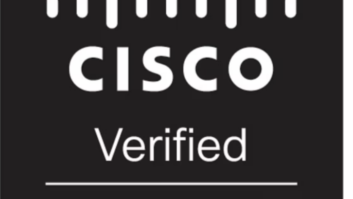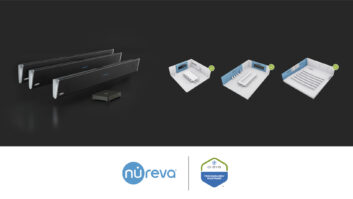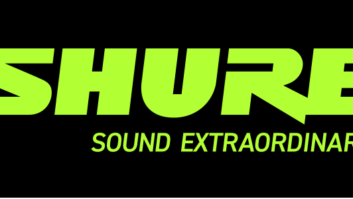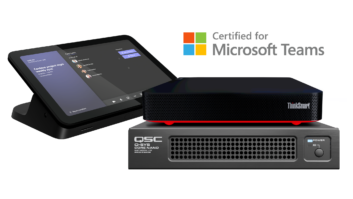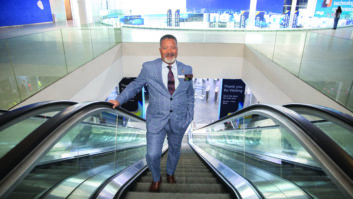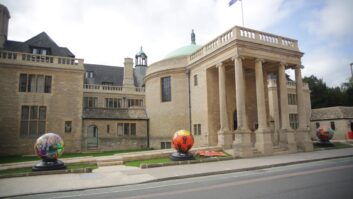
How did Dataton come into being?I’ve been involved with the company since the 1970s. Originally we were making a modular synthesiser system, which is where the name Dataton came from – computers and music in Swedish. It was at the same time as Moog synthesisers and those kinds of things. As an accessory we developed something to control slide projectors, because people wanted psychedelic visuals to go with their psychedelic music. Then we found out that there were a lot more people interested in that part of our product than the synthesisers – you could buy cheap synthesisers from Japan at that point. Then we drifted off into what was then known as multi-image: using multiple slide projectors for large presentations – which is pretty much what we’re still doing, although the technology has changed quite dramatically. So Watchout first came to the market in 1999?Yes. We had expanded to work with all kinds of AV technology – laserdisc players, Betacam decks, video switches, video effects units, controlling projectors, controlling matrix switches and all these kinds of stuff – and although people could do great presentations with that it was hard work because of all the gear you had to manage. We were using computers – we had a product called TRAX, which was a way to orchestrate all this gear. People used that to make good presentations but because of all the equipment it was quite an undertaking. I could see that computers would soon become powerful enough to do much more of the work; while previously they had been used just to control and orchestrate it, now they could be the delivery mechanism of the media.
That was sort of the idea behind Watchout – how much stuff can we take away between the creative idea and the results on the screen? It turned out that we could take away nearly all of it, apart from the computer and the display device. How has the product developed since its initial creation – and how much has that been tied up with what the supporting technology can achieve?We’ve certainly been fortunate to tag along with developments, both in image quality in the audiovisual business and in sheer horsepower in computers and their auxiliary equipment, like capture cards and graphics sub-systems. These have allowed us to make the product deeper in terms of quality, resolution and the amount of media you can present at one time, and also broader in terms of the kinds of material you can show: when we started out it was still images and video, but now we’ve extended it out to all kinds of interactive content, streaming content and things that are pulled from databases and rendered into the show. Do you get ideas for new product features from what customers ask you about?Very much so. Sometimes we have an idea – like in version 5 we introduced the dynamic image server, which is a way to bring various kinds of dynamic content into the show – so you can have it change even down to the second. You change the content in the database and it’s immediately up on the screen. We really didn’t have much idea what people were going to make out of that – so to see the amazing way that that part of our product has taken off over the course of less than a year, that gives us a lot of new thoughts and ideas about how to develop it further. I think the dynamic and interactive aspects are a key part of the product going forward. How do you think the industry that Dataton supports has changed during the lifetime of Watchout?Coming back to interactivity… the timespan between when something happens and you can get it up on screen has shortened. That’s something you see not only in our part of the industry, but everywhere: something happens and it goes up on YouTube right away; or you take a picture with your phone and it’s immediately up on Flickr or Facebook. So while you still have production times where you plan things out and do them properly, you also have more and more of a mix of this kind of up-to-the-minute, or sometimes up-to-the-second information, finding its way into your presentation. It’s important to find a good mix between these things – you need to have the well-prepared, well-produced content, otherwise the end result isn’t really worth watching.
But when it’s done well… you can have properly produced and conceptualised presentations mixed with audience interaction, like the Ford job that was done for an auto show. Audience members can take an active part in the presentation by being pre-registered using an RFID card, they can identify themselves into the show, they get a camera on them, they get put on the screen with their name, and a pre-produced part – in this case a racing car going around them, that has been pre-captured – and that is bluescreened into the presentation. Then the end result goes up on YouTube so they can show their friends when they get back home. The interaction between well-produced content and this kind of interactivity is what really excites me. Do you have any thoughts as to what the next big thing will be in this area? I think I can see that there is more and more of a crossbreeding between what happens on the web and your presentation, your pre-produced content. That’s an area that excites me quite a lot. Another area where we have started to enhance the product is to try to move things off the wall, off the screen and into the room. We recently added support for 3D content to Watchout and stereoscopic displays, and that also allows you to bring visuals out into the room. If you combine that kind of multidimensional presentation with audience interaction you can come up with things that are really exciting. Where do you think the greatest demand is, or will be, for stereoscopic 3D?That’s hard to tell. I’m a little bit sceptic to the idea of using it for TVs in a domestic setting… but when we did the Watchout 5 launch presentation last summer we had quite a bit of a discussion, because stereoscopic support was a new thing in our product then. We thought: Will people put the goggles on and sit there for a seminar with a guy talking in front of them with these goggles on, is that going to work? And it turned out it worked great. So in that kind of setting, it does add an additional dimension to a presentation. And of course in cinemas, it seems to work, they have been running for quite some time and that seems quite successful.
I hope I will see more creative use of stereoscopic presentations – bringing things into the room, like a modern day version of the Pepper’s Ghost effect, making things happen in places or in ways that surprise or excite you in a visitor centre, museum or some other environment. www.dataton.com
